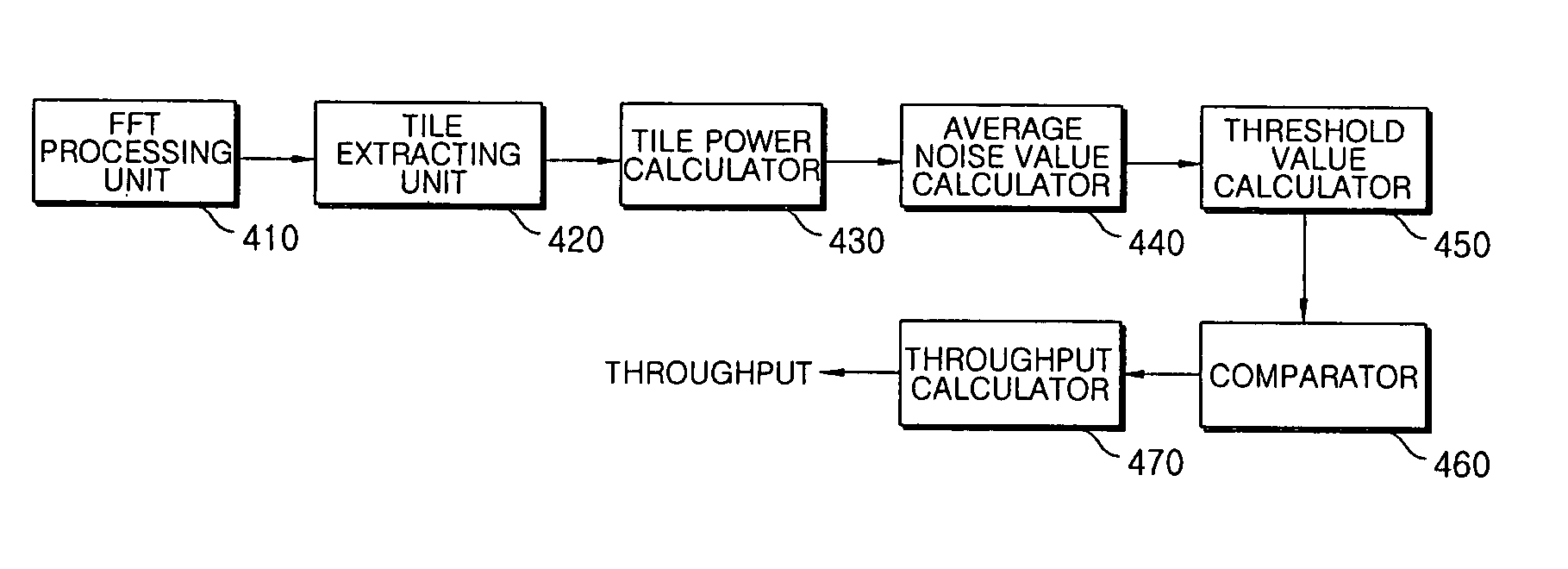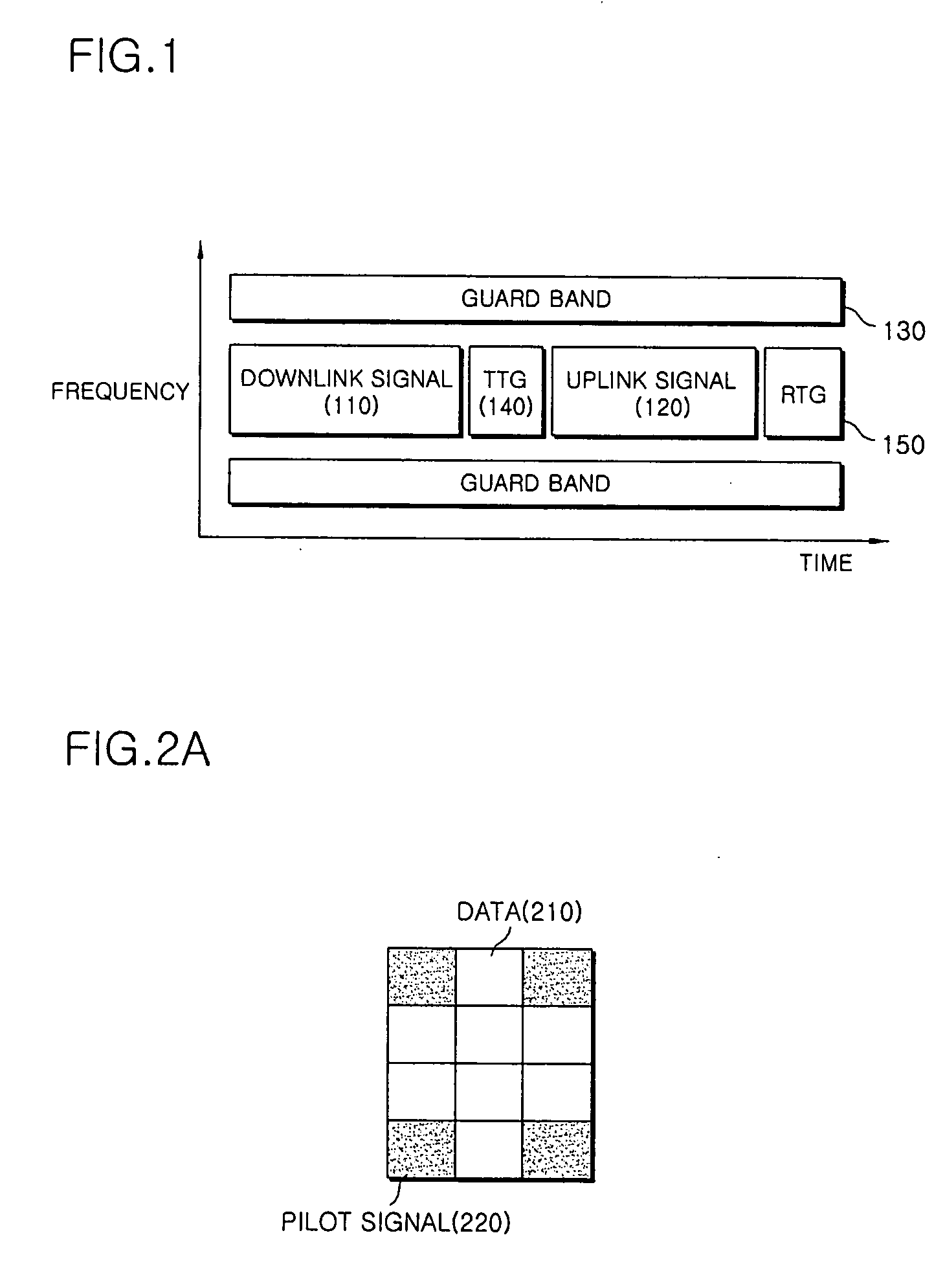Method and apparatus for measuring uplink data throughput in WiBro repeater
a repeater and data throughput technology, applied in the field of wibro system, can solve the problems of repeater malfunction, low mobility, and inefficient high-speed data service of ip-based technology, and achieve the effect of reducing the number of repeaters
- Summary
- Abstract
- Description
- Claims
- Application Information
AI Technical Summary
Benefits of technology
Problems solved by technology
Method used
Image
Examples
Embodiment Construction
[0034] Exemplary embodiments in accordance with the present invention will now be described in detail with reference to the accompanying drawings.
[0035] While a CDMA system with code division duplex (CDD) mode performs power control according to a channel condition, a WiBro system with time division duplex (TDD) mode supplies constant power instead of performing power control and adjusts the amount of data according to channel condition. The amount of data is adjusted through Adaptive Modulation and Coding (AMC) and Hybrid Automatic Repeat Request (HARQ). While the great amount of data can be transmitted in a high signal-to-noise ratio (SNR) environment, the small amount of data is transmitted in a low SNR environment. Thus, the amount of data can be determined by SNR in the WiBro system. In the WiBro system, the amount of data per subchannel is also determined by SNR. Accordingly, the amount of data is proportional to both the number of subchannels and the SNR.
[0036] In order to ...
PUM
 Login to View More
Login to View More Abstract
Description
Claims
Application Information
 Login to View More
Login to View More - R&D
- Intellectual Property
- Life Sciences
- Materials
- Tech Scout
- Unparalleled Data Quality
- Higher Quality Content
- 60% Fewer Hallucinations
Browse by: Latest US Patents, China's latest patents, Technical Efficacy Thesaurus, Application Domain, Technology Topic, Popular Technical Reports.
© 2025 PatSnap. All rights reserved.Legal|Privacy policy|Modern Slavery Act Transparency Statement|Sitemap|About US| Contact US: help@patsnap.com



